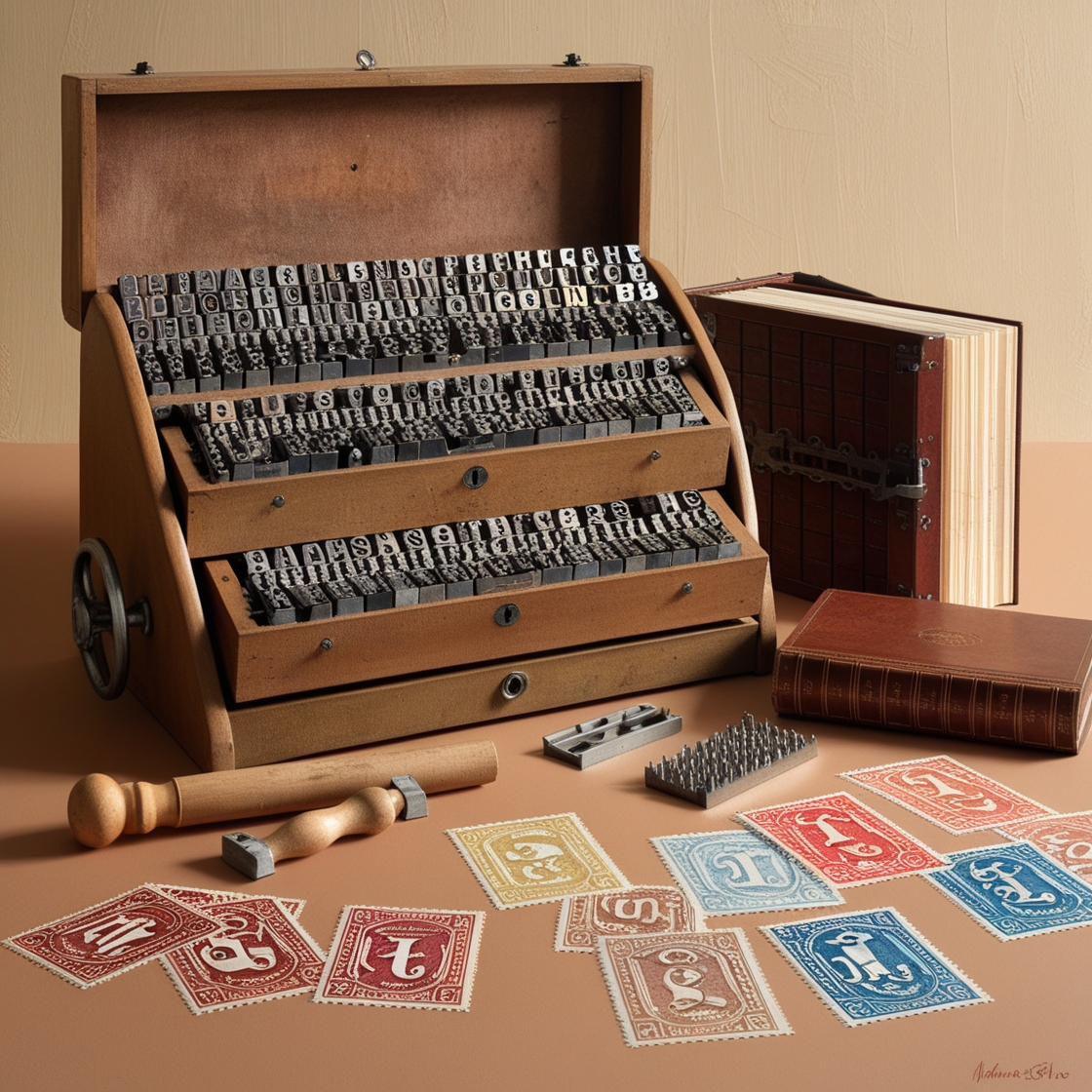Typography is a printing method using raised metal type or plates. Ink is applied to the raised surface, which is then pressed directly onto paper, transferring the inked image. For postage stamps, this technique involves setting individual letters and design elements in relief, allowing for crisp, precise printing of text and graphic elements.
Typography, also known as Letterpress, is one of the earliest methods used for printing postage stamps. This traditional technique has played a significant role in the history of stamp production, particularly in the 19th and early 20th centuries. Here’s a detailed look at Typography in the context of postage stamps:
Overview of Typography (Letterpress)
Process: Typography or Letterpress printing involves creating a raised image of the stamp design on a metal plate, often made from steel or copper. Ink is applied to the raised surfaces, and the paper is then pressed onto the plate. The inked areas transfer the design onto the paper, resulting in a printed stamp.
Operation: The process can be done manually or mechanically, with the latter allowing for faster and more consistent production. The key aspect of typography is that the ink is transferred directly from the raised areas of the plate to the paper, producing a clear, sharp impression.
Historical Significance
Early Use: Typography was the dominant method for printing postage stamps in the 19th century. The first-ever postage stamp, the Penny Black issued by Great Britain in 1840, was printed using the typography method. Many countries adopted this technique for their early stamp issues due to its simplicity and reliability.
Evolution: As technology advanced, other printing methods like engraving and lithography began to supplement and eventually replace typography for certain types of stamps, especially where higher detail or colour complexity was required. However, typography remained popular for many standard and lower-value stamps for a long time.
Characteristics of Typographic Stamps
- Design and Appearance: Typographic stamps typically feature bold, simple designs due to the limitations of the letterpress process. Fine details and gradations of colour are challenging to achieve with typography, so the designs tend to have solid areas of colour and clear, strong lines.
- Impression: The printing process leaves a slight indentation or embossing on the back of the stamp, which can often be felt by touch. This is one of the distinguishing features of letterpress printing.
- Colour: Early typographic stamps were often monochrome, as the process was not initially well-suited to multicolour printing. Later, more sophisticated techniques allowed for the use of multiple colours, though with limitations.
Advantages
- Simplicity: Typography is straightforward, making it ideal for mass production, especially in the early days of stamp production when more complex methods were not yet widely available.
- Cost-Effectiveness: The process is relatively inexpensive, particularly for large print runs, making it a practical choice for printing standard postage stamps.
- Durability of Plates: The metal plates used in typography are durable, allowing for the production of large quantities of stamps without significant degradation of image quality.
Challenges
- Detail and Fineness: Typography is less capable of producing the fine details and intricate line work possible with engraving (intaglio) or lithography. This limits the complexity of designs that can be reproduced effectively.
- Colour Limitations: The process was traditionally limited to single-colour printing, and even when multiple colours were used, the alignment (registration) of the colours could be challenging.
Notable Examples
- Penny Black (1840): The world’s first adhesive postage stamp, issued by Great Britain, was printed using the typography method. It featured a simple yet iconic portrait of Queen Victoria.
- U.S. Franklin and Washington Issues: Early U.S. stamps featuring portraits of Benjamin Franklin and George Washington were also printed using typography.
Decline and Modern Usage
- Decline: By the mid-20th century, typography was gradually supplanted by other methods like offset lithography and photogravure, which offered greater flexibility in design and colour. However, typography continued to be used for specific types of stamps, such as provisional issues or local stamps in some regions.
- Modern Usage: Today, typography is rarely used for postage stamps, except for special editions or when a particular retro or historical aesthetic is desired. It may also be employed in combination with other printing methods for effect.
Collectability
- Historical Value: Typographic stamps are highly valued by collectors, particularly early issues. Their historical significance, coupled with the distinct characteristics of the letterpress process, makes them sought after in the philatelic community.
- Identification: Collectors can often identify typographic stamps by the characteristic indentation on the back and the typically bold, clear design.
If you liked this post, you may also like What is Intaglio Printing? or What is Offset Printing?
You can also learn more about the methods and process of postage stamp printing at findyourstampsvalue.com.

33 year old casual stamp collector from the UK!
